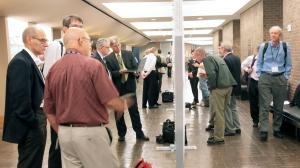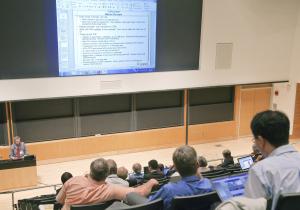What is the best way forward to commercial fusion energy?
This important topic reunited fusion researchers from ten countries from 7-10 September at the campus of Princeton University in Princeton, New Jersey. Organized by an international committee of fusion leaders and hosted by the Princeton Plasma Physics Laboratory (PPPL) the workshop, entitled "Magnetic Fusion Energy: Roadmapping in the ITER Era" occurred at a pivotal moment in the history of magnetic fusion development. As the ITER project is now launched on its mission to answer outstanding questions on the control of a burning plasma, countries all over the world are planning—with renewed intensity—the research and facilities needed to harness fusion energy for commercial use.
The international workshop provided a timely forum for the exchange of technical information and strategic perspectives on how to best tackle the remaining science and technological challenges on the way to a magnetic fusion DEMO (demonstration device) and commercialization. The participation of a large number of the world's leading fusion science and engineering researchers reflected the widely felt sense of urgency to collaborate more closely on these challenges.
The workshop was organized around four topics: fusion technology; physics-technology integration and optimization; major facilities; and perspectives on DEMO and the roadmap to DEMO. Participants, including participants from all of the ITER Members, advocated a remarkably consistent timeline for the next-step facilities, despite some variation in the scale and scope of the facilities being considered. All agreed that serious planning should begin now, leading to construction in the 2020s and operation in the late-2020s to mid 2030s.



